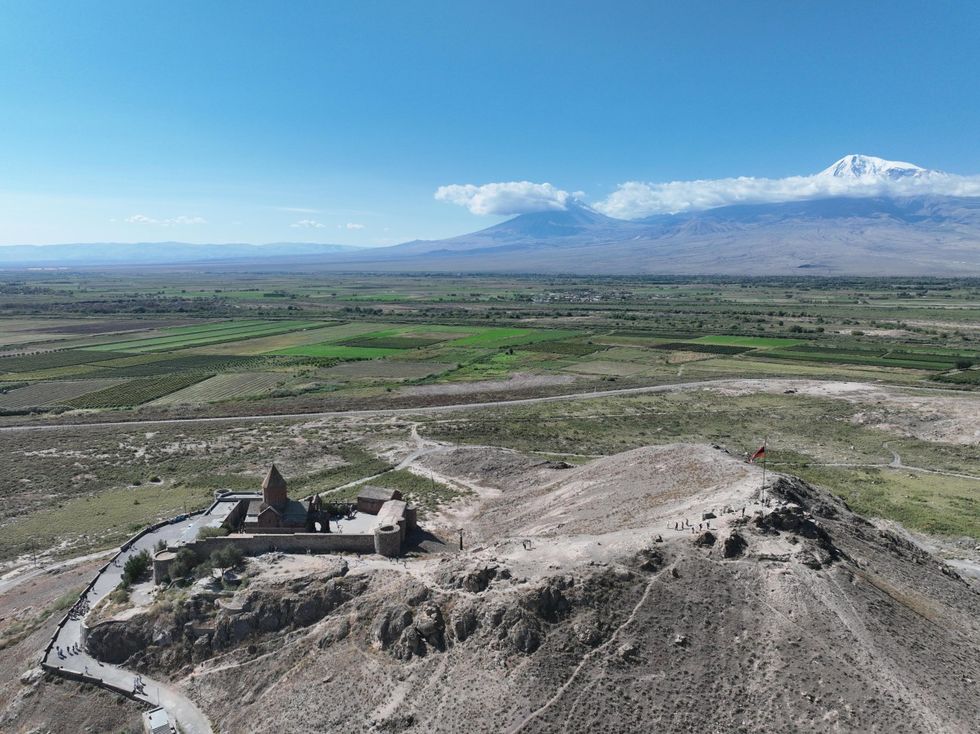Researchers originally made the discovery in Artaxata last year in a mission partnered with the Armenian Academy of Sciences, but further excavation and analysis is taking place this year
Armenian-German Artaxata Project
According to legend, the King of Armenia declared Christianity the official religion of the country, decades ahead of the Roman Empire's conversion
Don't Miss
Most Read
Archaeologists have discovered an ancient church in Armenia that dates back to 350 AD, almost 2,000 years ago - the oldest Christian church that has ever been uncovered.
Researchers originally made the discovery in Artaxata last year in a mission partnered with the Armenian Academy of Sciences, but further excavation and analysis is taking place this year.
University of Münster's classical archaeologist Achim Lichtenberger said: "The fourth century building is the oldest archaeologically documented church in the country – sensational evidence for early Christianity in Armenia."
Another professor noted that the church's shape has also shed light on the architecture of the era, saying: "Octagonal churches were unknown here until now, but we are very familiar with them from the Eastern Mediterranean region, where they first appeared in the 4th century AD."

The team started its Armenian-German Artaxata Project six years ago, which sought to carry out a deeper study of the ancient city's architecture, with the church deemed the team's first significant finding so far
Armenian-German Artaxata Project
The team started its Armenian-German Artaxata Project six years ago, which sought to carry out a deeper study of the ancient city's architecture, with the church deemed the team's first significant finding so far.
Artaxata was the capital of the Kingdom of Armenia from 176 BC and was a hub for trade and commercial use, from which its ruler Tiridates III ruled.
According to legend, the King declared Christianity the official religion of Armenia, decades ahead of the Roman Empire's conversion, as a result of the work of St Gregory the Illuminator, who is still revered as the head of the Armenian Apostolic Church today, as well as other select communities.
The ancient city - which is located near modern day city of Artashat - saw its fair share of Roman attacks, with a final blow from Pompey the Great that caused the Armenian King to cede several of his conquered territories.
LATEST ARCHAEOLOGICAL DISCOVERIES:
The researchers unveiled the remains of wooden platforms, which they radiocarbon-dated, as well as the church's octagonal floor, which spanned approximately 30 metres in diameter.
The building itself had a "simple mortar floor and terracotta tiles", lavishly decorated with materials, such as marble, which had been imported from the Mediterranean.
The team in Armenia will continue with its project, as it hopes to uncover further material as well as identify the individual to whom the church was dedicated.
These discoveries have followed Azerbaijan's attempt to destruct Armenian historical, religious, political and residential sites, such as statues and churches, around Artsakh since 2021, according to Armed Conflict Location & Event Data (ACLED).

The team in Armenia will continue with its project, as it hopes to uncover further material as well as identify the individual to whom the church was dedicated
Armenian-German Artaxata Project
The discovery follows the recent finding of a nearly 4,000-year-old Egyptian tomb of a noblewoman from the ancient civilisation in the Asyut region.
According to the Ministry of Tourism and Antiquities, researchers made the discovery of Edi, who was the daughter of a prominent governor, as they cleaned her father's tomb, led by a team of German and Egyptian archaeologists.
According to Mohamed Ismail, Secretary-General of the Supreme Council of Antiquities, the find illuminated the study of socio-political structure of the Middle Kingdom, the Egyptian period between 2030 and 1650 BC.
Ismail said: "Preliminary studies suggest that Edi died before reaching the age of 40 and suffered from a congenital foot defect."












